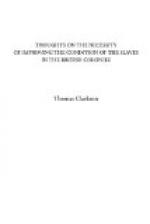Mr. Botham then explained the simple process of making sugar in the East. “A proprietor, generally a Dutchman, used to let his estate, say 300 acres or more, with proper buildings upon it, to a Chinese, who lived upon it and superintended it, and who re-let it to free men in parcels of 50 or 60 acres on condition that they should plant it in canes for so much for every pecul, 133 lbs., of sugar produced. This superintendant hired people from the adjacent villages to take off his crop. One lot of task-men with their carts and buffaloes cut the canes, carried them to the mill, and ground them. A second set boiled them, and a third clayed and basketed them for market at so much per pecul. Thus the renter knew with certainty what every pecul would cost him, and he incurred no unnecessary expense; for, when the crop was over, the task-men returned home. By dividing the labour in this manner, it was better and cheaper done.”
Mr. Botham detailed next the improved method of making sugar in Batavia, which we have not room to insert here. We may just state, however, that the persons concerned in it never made spirits on the sugar estates. The molasses and skimmings were sent for, sale to Batavia, where one distillery might buy the produce of a hundred estates. Here, again, was a vast saving, says Mr. Botham, “there was not, as in the West Indies, a distillery for each estate.”
He then proceeded to make a comparison between the agricultural system of the two countries. “The cane was cultivated to the utmost perfection in Batavia, whereas the culture of it in the West Indies was but in its infancy. The hoe was scarcely used in the East, whereas it was almost the sole implement in the West. The plough was used instead of it in the East, as far as it could be done. Young canes there were kept also often ploughed as a weeding, and the hoe was kept to weed round the plant when very young; but of this there was little need, if the land had been sufficiently ploughed. When the cane was ready to be earthed up, it was done by a sort of shovel made for the purpose. Two persons with this instrument would earth up more canes in a day than ten Negroes with hoes. The cane-roots were also ploughed up in the East, whereas they were dug up with the severest exertion in the West. Many alterations,” says Mr. Botham, “are to be made, and expenses and human labour lessened in the West. Having experienced the difference of labourers for profit and labourers from force, I can assert, that the savings by the former are very considerable.”




